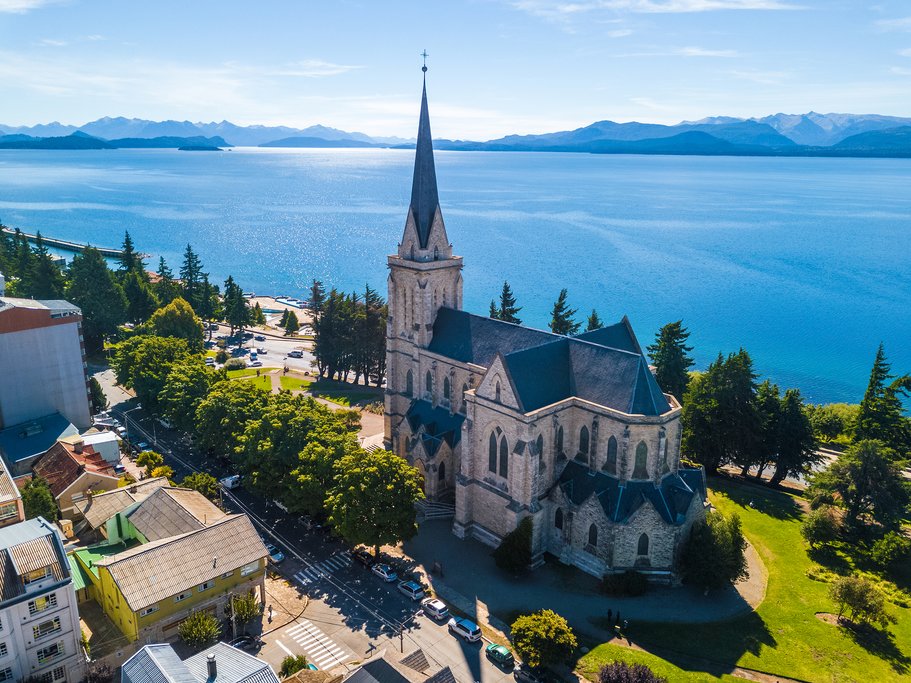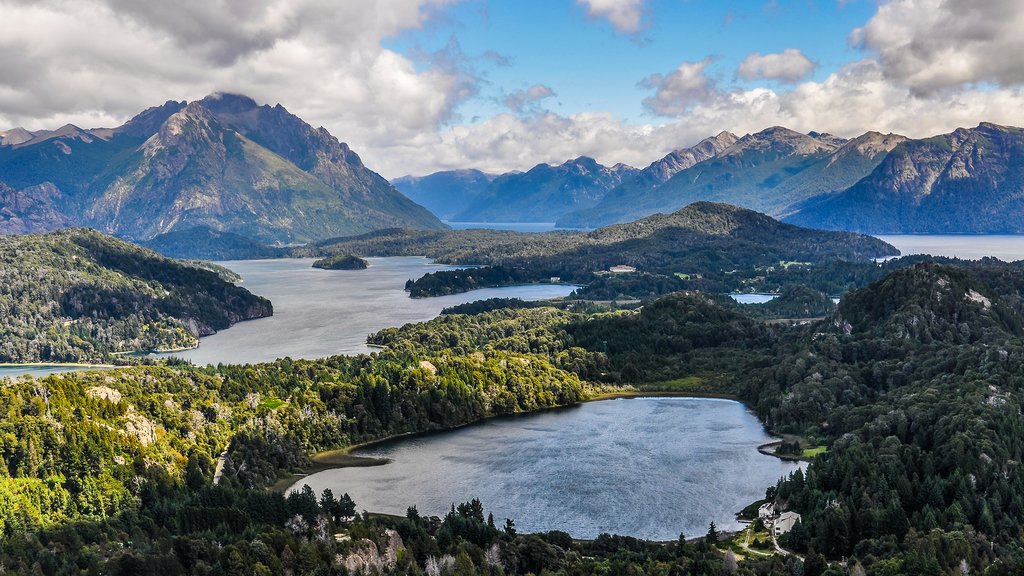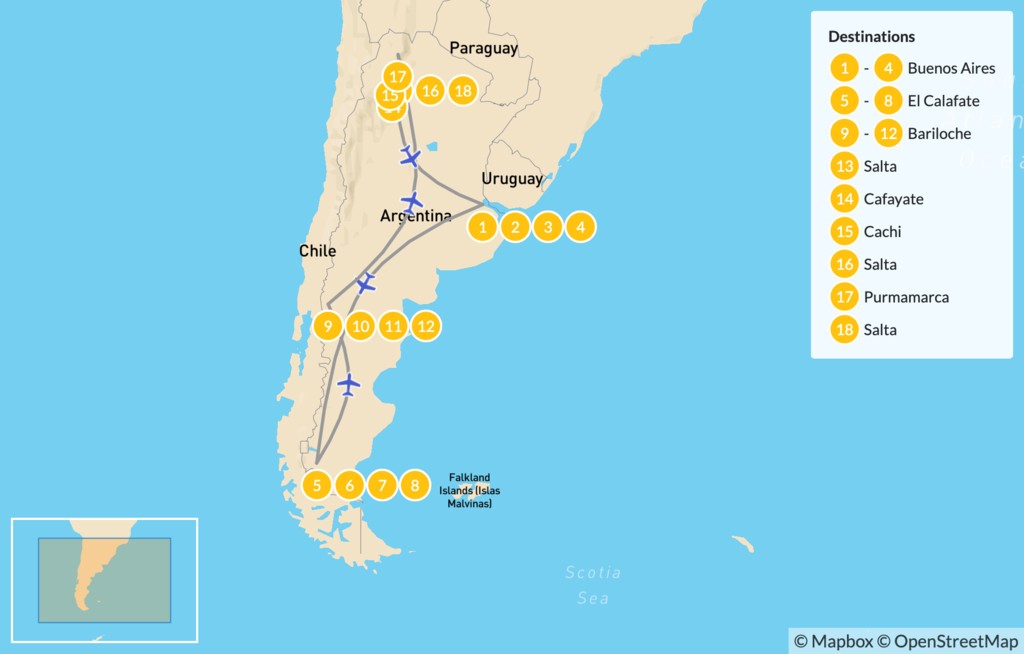Highlights
- Absorb the vibrant culture of Buenos Aires
- Explore the massive glaciers near El Calafate, including Perito Moreno
- Hike, bike, or kayak around the lakes of Bariloche
- Hear lively folk music in Salta's peñas (bars)
- Marvel at expansive salt flats
Brief Itinerary
| Day | Highlights | Overnight |
|---|---|---|
| Day 1 | Buenos Aires | Buenos Aires |
| Day 2 | Buenos Aires | Buenos Aires |
| Day 3 | Buenos Aires to Tigre | Buenos Aires |
| Day 4 | Buenos Aires | Buenos Aires |
| Day 5 | Buenos Aires to El Calafate | El Calafate |
| Day 6 | Explore Los Glaciares National Park | El Calafate |
| Day 7 | Los Glaciares National Park | El Calafate |
| Day 8 | Discover El Calafate | El Calafate |
| Day 9 | El Calafate to Bariloche | Bariloche |
| Day 10 | Bariloche | Bariloche |
| Day 11 | Tristeza Sound | Bariloche |
| Day 12 | Bariloche | Bariloche |
| Day 13 | Bariloche to Salta | Salta |
| Day 14 | Salta to Cafayate | Cafayate |
| Day 15 | Cafayate to Cachi | Cachi |
| Day 16 | Cachi to Salta | Salta |
| Day 17 | Salta to Purmamarca | Purmamarca |
| Day 18 | Purmamarca to Salta | Salta |
| Day 19 | Goodbye Argentina |
Detailed Itinerary
Day 1: Buenos Aires

Welcome to Argentina! Considered the "Paris of South America" and the "Queen of El Plata," the capital city Buenos Aires is famous for its mix of European ambiance and a Latin American zest for life. Get ready to explore the birthplace of Argentina's rich tango heritage, the home to some of the world's most beautiful architecture and richest museums, and the nucleus of fútbol (soccer) culture—a sport for which Argentinians have unbridled enthusiasm.
When you arrive at the airport—most likely Ezeiza International—your driver will take you to your hotel. Once you're rested up, you'll have time to wander, with the city center as your best starting point. From there, you can admire Plaza de Mayo, the city's oldest and most important square, and a site of both celebrations and protests. The plaza is ringed with ornate government buildings, the Metropolitan Cathedral, and the 1580 town hall. You might visit the Obelisco, one of the most famous landmarks in the city, or stop by Teatro Colon, one of South America's premier opera houses. Stroll through Puerto Madero, an upscale waterfront neighborhood adjacent to Buenos Aires' downtown.
Enjoy a romantic stroll over the canal on the Puente de la Mujer at sunset—the innovative, modern footbridge swings open to allow boat traffic to pass. Dine at an Argentine steakhouse, or parilla. Plan on eating late—Buenos Aires' culture thrives after dark, and it's common to have dinner after 9 p.m., especially on weekends.
Day 2: Buenos Aires

After breakfast, you'll join a fascinating tour for an overview of the city of Buenos Aires, Argentina’s history, and culture. During this 3-hour tour, you'll visit the neighborhood of Retiro and Avenida 9 de Julio—South America’s widest avenue. You will pass through the historic and architecturally impressive city center, home to Congress, Plaza de Mayo, Avenida de Mayo, and the Casa Rosada (Presidential Palace). Then, visit the oldest neighborhood in the city, San Telmo. Afterwards, you'll stop by the city's original port, La Boca. In the evening, enjoy a delicious meal accompanied by a tango performance—one of Argentina's most well-known cultural highlights.
Day 3: Buenos Aires to Tigre

You'll travel up Río de la Plata to the point where it converges with the Paraña River Delta, which is comprised of a series of islands, about an hour north of Buenos Aires. During the boat ride, you'll enjoy views of the city skyline from the deck, enter a network of freshwater canals, and sail among the many islands that make up this unique region. The main port on these canals is in Tigre, a Venetian-style village whose small-town and relaxing atmosphere contrast with Buenos Aires' bustling energy.
On the waterfront, you'll find Puerto de Frutos, a maze of craft markets, produce stalls, artisanal goods, and even garden centers. The Museo de Arte features a grand collection of Argentine art spanning two centuries. The Naval Museum and the Museo de Maté are other highlights worth a visit. The latter offers an overview of maté (an herb cultivated in the Paraná region of the country for tea) with tastings at their "mate bar."
After a day discovering this town, board a train back to Buenos Aires. Your tour officially ends at the Retiro station, where you'll have the rest of the evening to explore on your own.
Day 4: Buenos Aires

Get ready to explore, because it's time to see Buenos Aires at your own pace. You might opt for a day of walking and sightseeing throughout this European-inspired metropolis. Visit Plaza San Martín, located at the end of downtown's commercial pedestrian thruway, Florida Street. This leafy plaza, anchored by a majestic ombú tree, is named after one of the heroes of Argentina's independence movement—General José de San Martín.
At Plaza de Mayo, you'll find yourself in Buenos Aires' main square and home to the Casa Rosada, Argentina's presidential palace. The plaza was the site of the May Revolution of 1810 that kicked off this former Spanish colony's quest for independence. At Metropolitan Cathedral, you'll find the principal Catholic church in the city which faces Plaza de Mayo. It was consecrated in 1791 and dates back to the late 16th century, when a humble chapel first sat on its current site.
To go back in time, you can visit Barrio San Telmo, Buenos Aires’ oldest neighborhood, which has a vibrant tango and arts scene. Its antique markets, cobbled streets dotted with faroles (French streetlamps), and old brick buildings with wooden balconies all add to its uniquely bohemian atmosphere. Sundays are especially abuzz with activity as the main street market comes alive around Plaza Dorrego.
Continue your exploration of Buenos Aires' past at Cementerio de Recoleta, a sprawling cemetery which is located in the "old money" enclave of Barrio Recoleta. It's filled with the ornate mausoleums of famous, notable, and wealthy Argentinians throughout history, including Evita Perón.
Day 5: Buenos Aires to El Calafate

Today you'll head to the airport for your morning flight (about 3 hours) to El Calafate. Known as the gateway to Argentina's glaciers, the city is located on the shores of Lago Argentino, the nation's biggest freshwater lake. If possible, select a window seat to enjoy stunning views of the Southern Patagonian Ice Field along the way.
You can spend the rest of the day relaxing or wandering around town. You can learn about nearby glaciers at the Glaciarium—a multi-media center that has an ice museum, various interactive displays, and educational information regarding glaciers. Or, don a coat, boots, and gloves, to enjoy a drink at the museum's Glaciobar BrancaIt, Argentina's first ice bar.
Day 6: Explore Los Glaciares National Park

After breakfast, you will head to Los Glaciares National Park. As you enter this protected area, you will catch your first glimpse of the majestic Perito Moreno. This expansive glacier flows down from the Andes over the turquoise waters of Lago Argentino and ends abruptly in a great wall of ice that curves around the lake. You may also witness "calving"—the awe-inspiring sight of ice breaking off the facade and crashing into the tranquil waters below. Every time ice hits the water, a thundering crash echoes around the lake.
Perito Moreno is not the only glacier in the area but it is the most famous in the park. It is one of the few advancing glaciers in the world, which is what causes the calving of ice. After arriving, you can admire Perito Moreno from a number of different vantage points thanks to the network of wooden walkways around the glacier. You will also get the chance to see the massive ice wall up close on a boat tour.
After a day spent viewing the glacier and wandering the numerous trails, head back to El Calafate to enjoy the evening at your leisure.
Day 7: Los Glaciares National Park

Aside from Perito Moreno, there are a number of other incredible masses of ice in Los Glaciares National Park. You'll have the opportunity to visit a few of these on a full-day boat excursion around Lago Argentino. You'll get so close to the glaciers' walls that you'll practically be able to reach out and touch them. From Punta Bandera Harbor, you'll board a modern catamaran and embark on your journey.
As you travel north along the frozen waters of Lago Argentino, you'll weave between icebergs as you make your way towards the first site—Upsala Glacier. After crossing the Boca del Diablo, the narrowest part of the lake, you'll enter the Upsala Channel and shortly afterward reach the glacier.
Your next destination will be towering Spegazzini Glacier. Entering the Spegazzini Channel you'll see Seco Glacier, a retreating wall of ice that is perpetually moving inland from the lakeshore. With ice walls 442 feet (135 m) tall, just being near this towering behemoth is enough to make you shiver. The tour ends with the boat's return to Punta Bandera where you'll transfer back to your hotel.
Chat with a local specialist who can help organize your trip.
Day 8: Discover El Calafate

You have the full day to relax in El Calafate or explore the charming city as you choose. You might go for a spa treatment at a nearby resort, or head out for an adventure in an around El Calafate—such as horseback riding on a ranch or joining a kayaking tour. You can also reach the Reserva Laguna Nimez with a 15-minute walk from the center of town, experiencing a wondrous haven for birds, including the Chilean flamingo.
To learn more about the area's history since the Ice Age, you can visit the Centro de Interpretación Histórica, learning about glaciers, dinosaurs, extinct animals, indigenous peoples, and the formation of geographical landscapes.
Day 9: El Calafate to Bariloche

After breakfast, you'll catch a flight (about 2 hours) from El Calafate to San Carlos de Bariloche, the main city in Argentina's Lake District, which is home to some of the most impressive scenery in the entire country. San Carlos de Bariloche was founded in 1902 on the shores of Lago Nahuel Huapi, or January Island, which itself is part of the larger Parque Nacional Nahuel Huapi.
The lake straddles the Chilean border, with the city of Bariloche located on the southeast shore. You might ride a cable car to the top of Cerro Campanario, as the view from atop this 1,050-meter (3,444-foot) high mountain is nothing short of breathtaking with Lago Nahuel Huapi and the snow-covered mountains that surround it. For dinner, regional fare like wild boar and lake trout is popular and delicious, as is the fondue (a culinary addition first introduced by the city's Swiss immigrants).
Day 10: Bariloche

In Bariloche, you'll have a guided tour and history lesson. Learn how San Carlos de Bariloche evolved relatively quickly from a small mountain village into one of the most attractive and popular cities in Argentina. As you experience the natural beauty of the region and hike around its terrain, you'll begin to understand why Bariloche was voted Argentina's national capital of adventure tourism. At the end of the tour, you'll visit a local microbrewery for lunch and beer tasting.
Day 11: Tristeza Sound

After breakfast in Bariloche, you'll take a scenic boat excursion from López Bay, where you'll navigate along a remote, lesser-visited branch of Nahuel Huapi Lake called Tristeza Sound. Expect to see beautiful mountains and waterfalls surrounding this part of the lake, and if the weather conditions are good, you can appreciate a beautiful view of the Tronador Mountain.
Once you reach the shore, you will start a hike in the forest among tree species like coihues and alerces (larch trees). The trail climbs up to a group of waterfalls cascading from the Frey River. When you return to your boat, you'll enjoy lunch on board as you make your way back to your starting point.
Day 12: Bariloche

In Bariloche, get ready for a day of adventures.
You might opt for a kayaking trip on Lago Mascardi — a V-shaped lake which lies about 18 miles (30 km) south of Bariloche and is a popular spot because of its calm, glassy waters, and pebble beaches. During your drive there, you'll encounter beautiful sights, including Lake Gutierrez and Cerro Catedral—Argentina's premier ski destination. You'll also cross the Continental Divide before arriving on the shores of Lake Mascardi where it meets the Manso River.
From here, you can embark on a moderate 2-3-hour kayaking excursion. First, you'll navigate through the Tronador (east-west) branch of Mascardi, paddling over turquoise waters flanked by evergreen forest surrounded by the dramatic Nahuel Huapi mountains. You’ll stop by a remote beach for lunch and time to relax, before paddling back to the starting point.
Or, you can go for a 2- to 3-hour mountain biking trip, following a route that will take you from the suburbs of Bariloche into the Andes foothills. It's a moderate ride comprised of mostly backroads and dirt tracks, with many flat but some uphill ascents (and one long downhill stretch).
Along the way, you'll enjoy beautiful panoramic views of Lake Gutierrez, Lake Moreno, and the surrounding mountains. You'll ride across creeks and visit Colonia Suiza— a traditional village dotted with chalets that was founded by Swiss pioneers in the late 19th century. The ride will finish with a refreshing beer tasting at a traditional microbrewery.
Day 13: Bariloche to Salta

From Bariloche you'll catch a flight to Salta (5 hours). Upon arrival, you'll pick up a 4x4 rental car for a self-drive adventure. The city is often referred to as Salta 'La Linda' (meaning Salta, the beautiful) due to its well-preserved 16th century colonial architecture, and year-round summer. In the afternoon, you can ride a scenic gondola for a birds-eye view of the city. In the evening, enjoy a traditional Argentine dinner at a cozy local restaurant and then head for the vibrant and authentic peñas—where locals grab a table to watch and dance along to their favorite singers.
Day 14: Salta to Cafayate

It's time to leave Salta and drive 121 miles (196 km) to Cafayate in the Calchaquí Valley along Route 68. During the ride, you'll stop at a famous gorge where erosion has carved interesting shapes into the rocks, becoming a UNESCO World Heritage site for its colorful hills and unique geological formations. Each of the hills has distinctly shaped features with names like the Devil’s Throat, the Amphitheater, the Frog, the Obelisk and the Castles. In Cafayate, you'll arrive in one of Argentina's most noteworthy wine-producing regions where the most popular varietal is Torrontés, which you can taste at a local winery.
Day 15: Cafayate to Cachi

You'll leave Cafayate and drive along the famous Route 40 headed 97 miles (157 km) north for Cachi. Along this enchanting road, you will discover towns like Angastaco, Molinos, and Seclantas. In Cachi, you'll find architecture that beautifully combines indigenous and Spanish traditions with adobe houses and white colonial buildings. You can visit the nearby Museo Arqueológico de Cachi Pío Pablo Díaz—a collection of locally-excavated artifacts, some dating back 10,000 years.
Day 16: Cachi to Salta

The road trip continues as you head from Payogasta on Route 40, surrounded by more stunning landscapes, including vineyards, with a total driving distance of 100 miles (161 km). You will then take Route 33 and drive along the Lerma Valley and perhaps marvel at the Laureles and Escoipe gorges. The scenery slowly changes as you climb the majestic Cuesta del Obispo mountain road up to its highest point at 9,842 feet (3,000 meters).
Later, you'll travel down to the low hills and flatlands of Los Cardones National Park, which is comprised of arid landscapes and even a few dinosaur fossils. From here, you'll continue to Salta where you'll stop for the night before continuing north.
Day 17: Salta to Purmamarca

Next, you'll follow the "Train to the Clouds" railway. You'll zigzag on quiet roads between blue sky and the high desert plains, visiting historic ruins, scattered houses, small villages, and amazing landscapes. Your first destination will be Campo Quijano and later the impressive Quebrada del Toro. From here, you will also see Santa Rosa de Tastil, a pre-Incan city from the XIII century, and San Antonio de Los Cobres—one of the smallest villages in the region—as you make your way to the Great Salt Flats. At Purmamarca, you'll arrive at the base of Jujuy's famed seven-colored mountain, after traveling a total distance of 116 miles (187 km).
Day 18: Purmamarca to Salta

From Purmamarca you'll drive through the Humahuaca Gorge—a UNESCO World Heritage Site. This major cultural route traces the spectacular valley of the Rio Grande and shows substantial evidence of its use as a major trade route during the past 10,000 years, with visible traces of prehistoric hunter-gatherer communities of the Inca Empire (15th to 16th centuries).
Along the route, you'll visit Maimará, Paleta del Pintor, Tilcara (and its famous Pucará de Tilcara), Trópico de Capricornio, Uquía (Pinturas Cuzqueñas), and the town of Humahuaca. Back in Salta, traveling a total distance of 116 miles (187 km), you can celebrate the end of your adventure.
Day 19: Goodbye Argentina

After breakfast, you'll catch a flight from Salta to Buenos Aires (about 2 hours), then head to the international terminal for your return flight home. Buen viaje!


